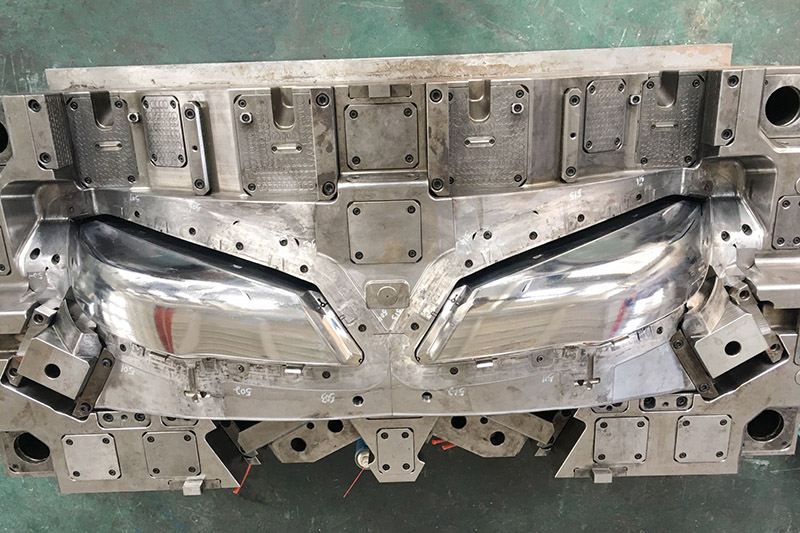Mold is a very important tool in the manufacturing process, which can help producers to make high-quality products. But molds also need to go through some specific care and maintenance measures to ensure smooth and efficient production. If the molds are not properly maintained, they may malfunction or become deformed, leading to production delays and losses.
In this article, we will share some useful tips on how to properly maintain your molds, as well as some easy-to-follow maintenance steps.
1. Carbohydrate Filtration
Before you start maintaining your mold, you need to make sure that all carbohydrates (such as grease and dirt, etc.) are filtered out. This can be done by using specific lubricants and filters. This can help to reduce the damage caused by dirt and impurities and can extend the life of the mold.
2. Pay Attention to Grain and Surface
The surface and grain of the mold can be damaged very easily. Therefore, you must be careful when handling or maintaining these molds. If you accidentally throw them off or use hard tools, you can damage them.
In addition, it is important to note that you must be especially careful when using lubricants that do not match the surface or grain of the mold. Therefore, as long as specific lubricants are used (especially on silicone and other non-metallic molds), these lubricants can help reduce wear and damage.
3. Regular Cleaning
Molds need to be cleaned regularly to ensure their efficiency and performance. You can use a soft rag to gently wipe the surface of the mold and remove any dirt and debris. In addition, applying effective maintenance techniques will help you prevent long-term friction and wear on your molds.
1) Dust removal from the mold surface: After wiping with a clean rag, touch the mold surface with your hand, if you can't feel any dust, it is qualified.
2) Mold guide sleeve, guide column cleaning: Clean the guide sleeve, guide column, and guide block parts of the accumulation of oil block with a rag and then smear with a small amount of oil lubrication.
3) The cleaning of the punching parts: Use the hammer to remove the waste in the hole as well as the waste stuck on the sliding plate and the residue of cutting waste in the edge part.
4) For plated molds, the tensile surface of the mold must be cleaned and the surface must be checked by hand to make sure it is smooth. The first sheet of material during production must be cleaned, and after production, the mold must be coated with a little oil.
4. Mold Lubrication
To ensure the reliable movement of the mold during operation and maintain the normal working condition of the mold, the relevant door parts must be lubricated and protected. The main contents are:
(1) Lubrication of guide posts and guide sleeves.
Before each use, lubricate the working surfaces of the guide posts and guide sleeves with engine oil or grease. Lubricate them once before disassembling the mold, and clean foreign matter and impurities adhering to the working surfaces at any time.
(2) For the lubrication of guide plates and sliding surfaces, grease is mainly used. Before lubrication, foreign matter on the working surface must be removed and grease can be evenly and thinly applied. For oil-containing guide plates, it is advisable that there is no lack of oil in the oil groove hole.
(3) Oil the corresponding parts of the mold regularly during production. Such as the pressing ring and fillet of the drawing die; the knife edge of the trimming die; the flanging knife block part, etc.

5. Know when to perform repairs
Even if the mold is well maintained, regular repairs and inspections are required. The purpose of these repairs and inspections is to identify potential problems and repair them promptly. Therefore, knowing what repairs are needed, and knowing when it is better to replace them, will help you extend the life of your molds, thereby reducing production costs and part damage.
6. Provide appropriate training and guidance to technicians
To ensure the best mold care, know how to provide your mechanics with proper training and guidance. This training and guidance will help ensure that your mechanics can handle molds professionally and know how to reduce the extent of damage and wear. This allows your technicians to better protect molds while increasing throughput and productivity.
To sum up, mold maintenance is not difficult. As long as you follow the above suggestions and tips, you can easily extend the service life of the mold and ensure that production efficiency and productivity are optimally guaranteed. Paying attention to the maintenance of your molds will be a long-term investment that can bring significant cost benefits to your business.
Post time: May-28-2024

